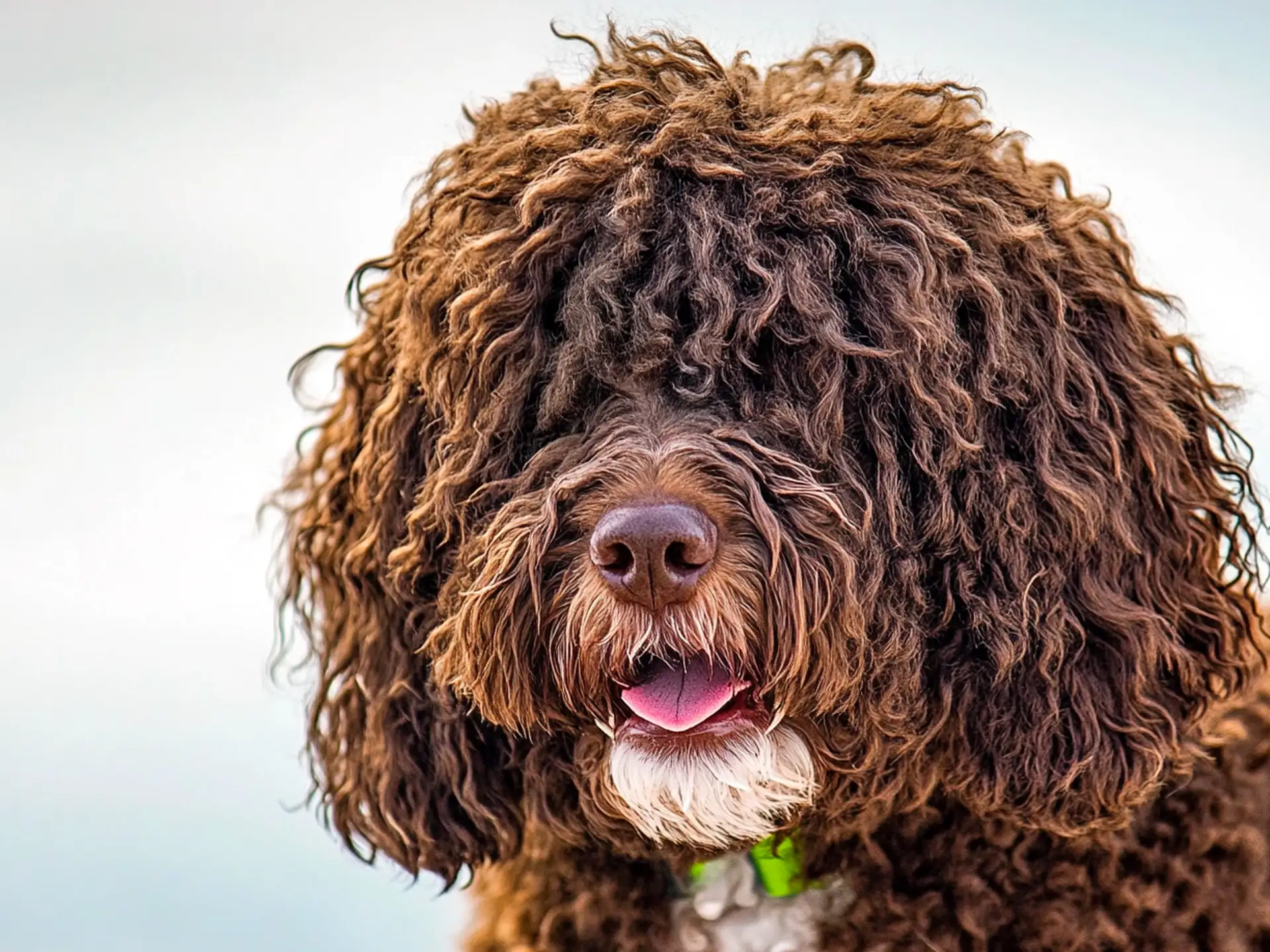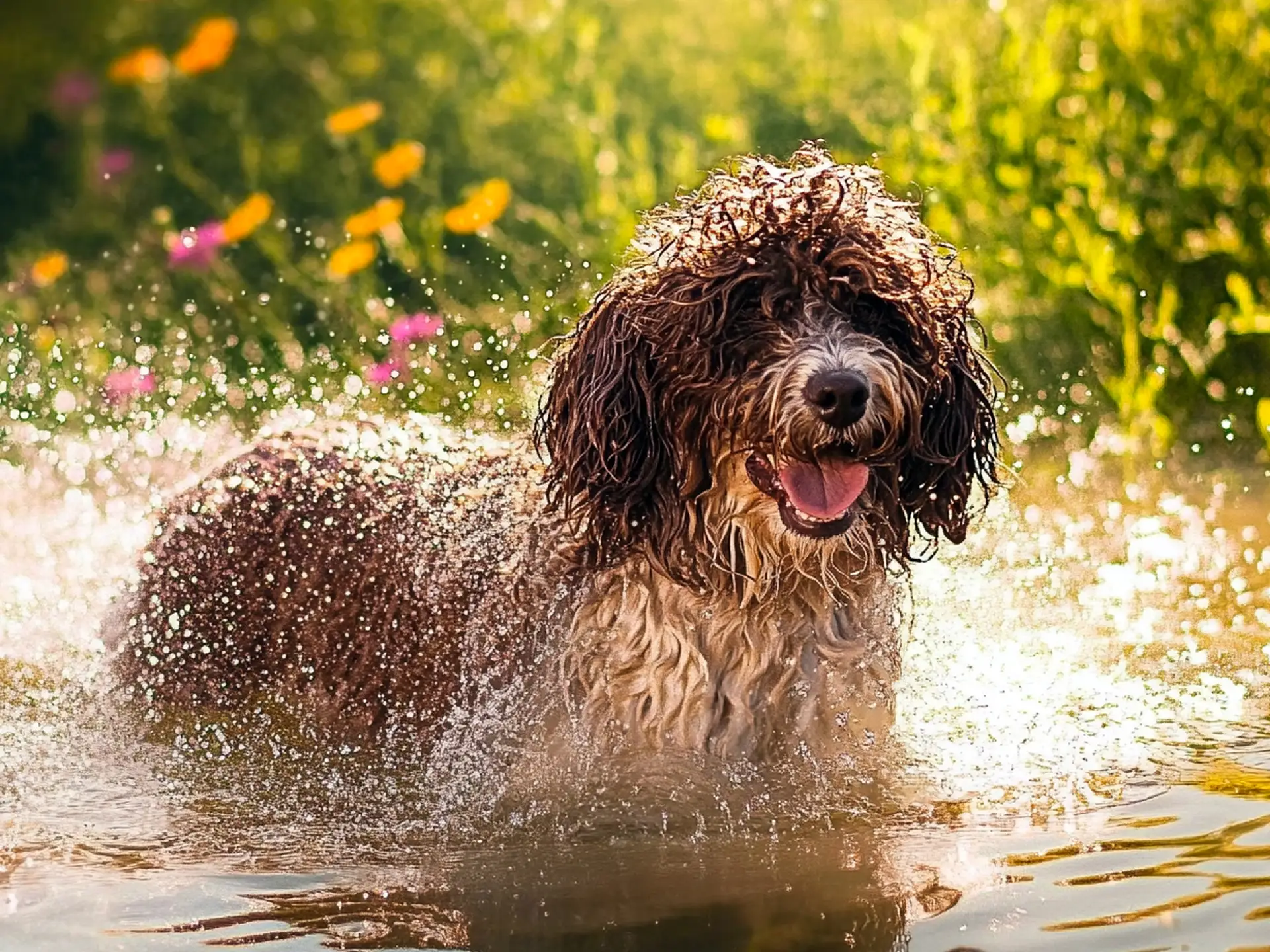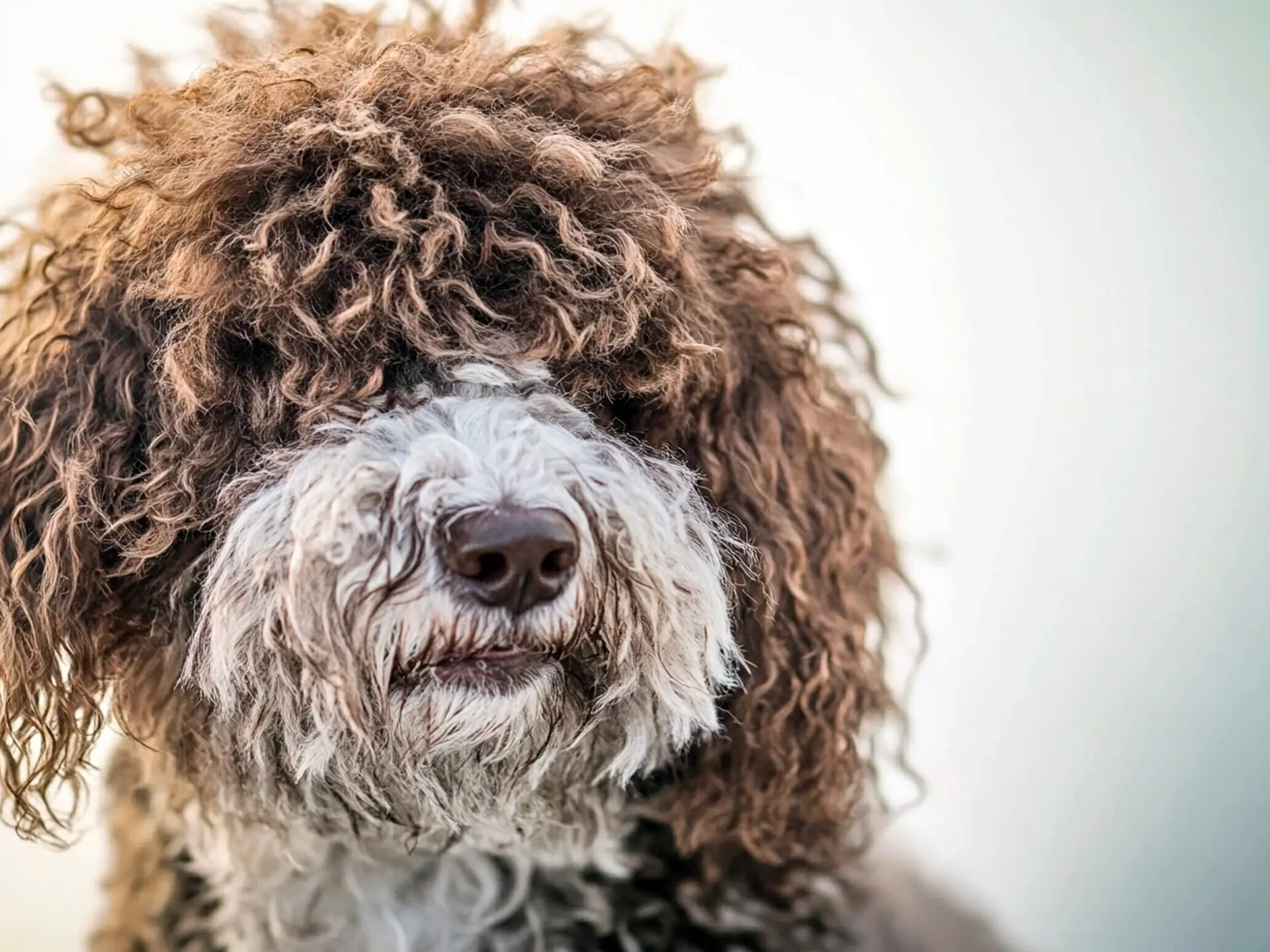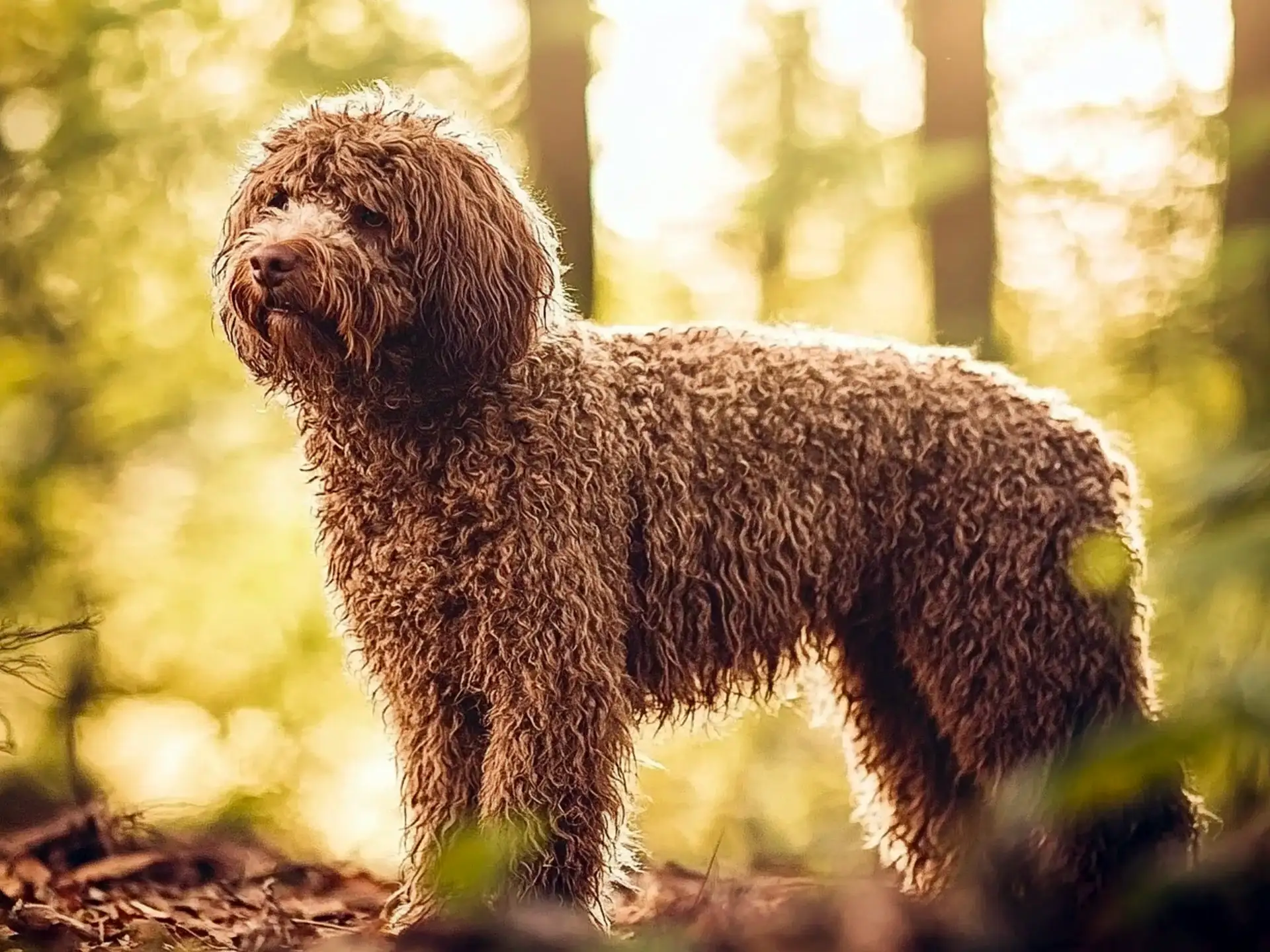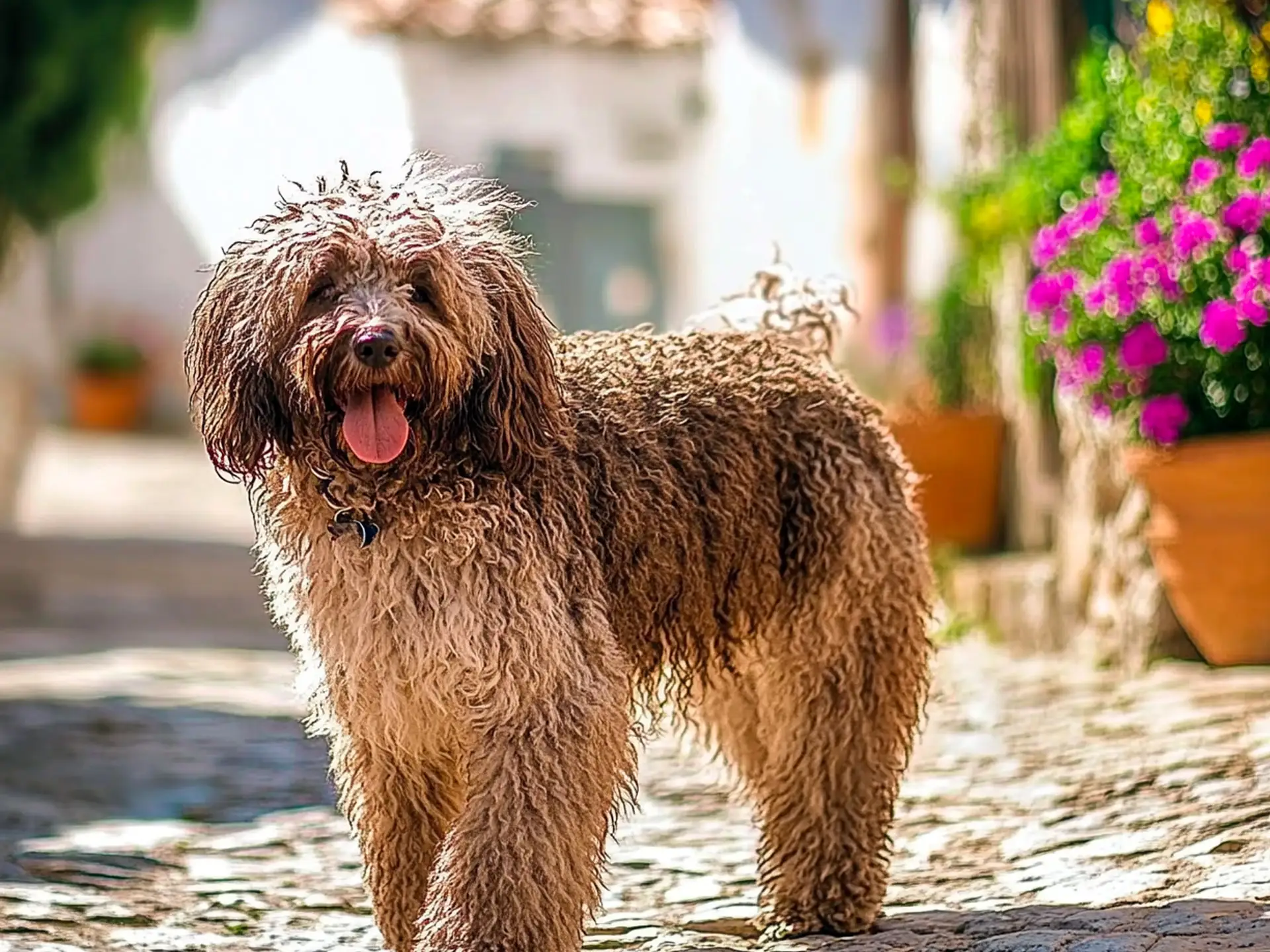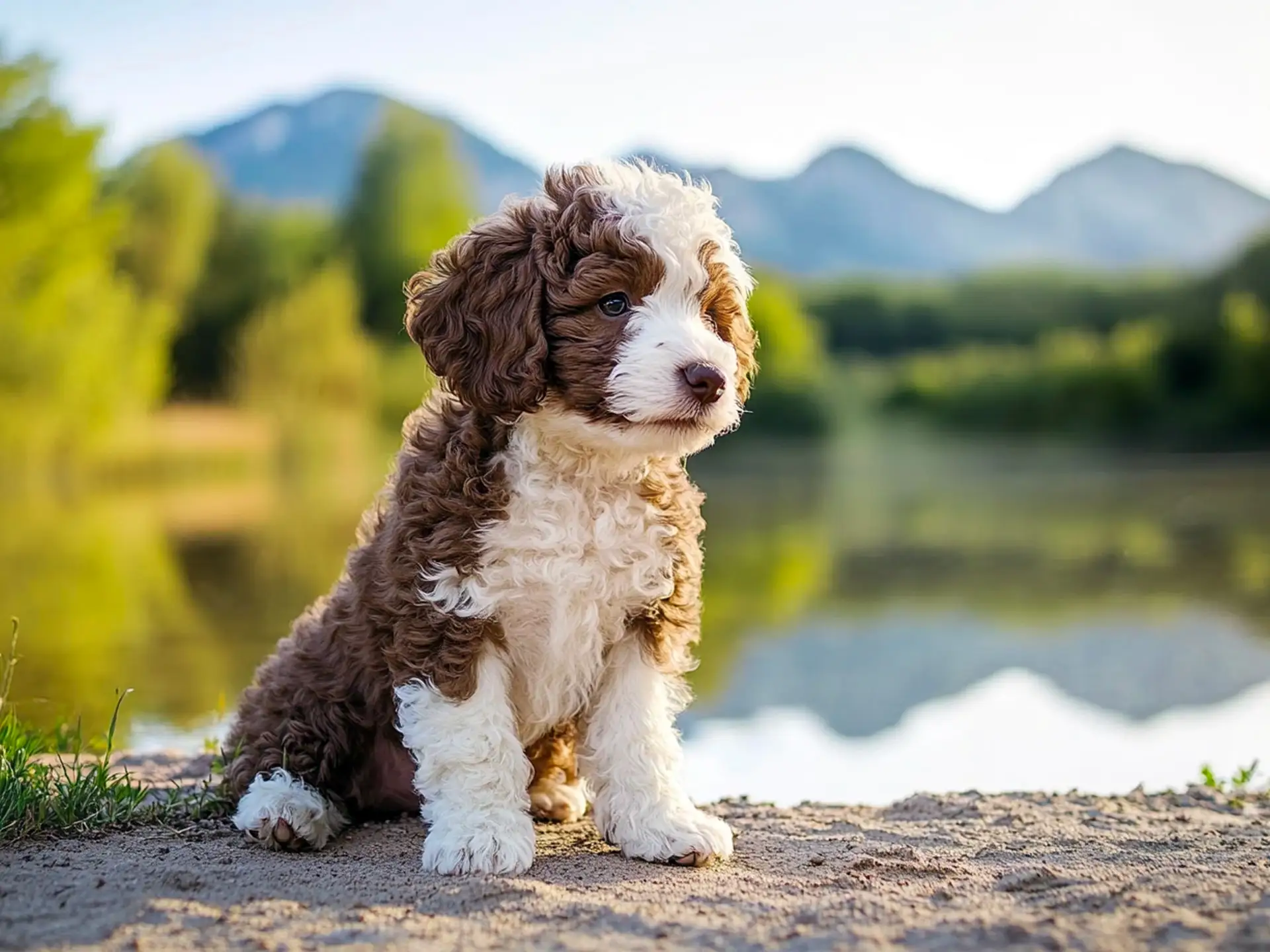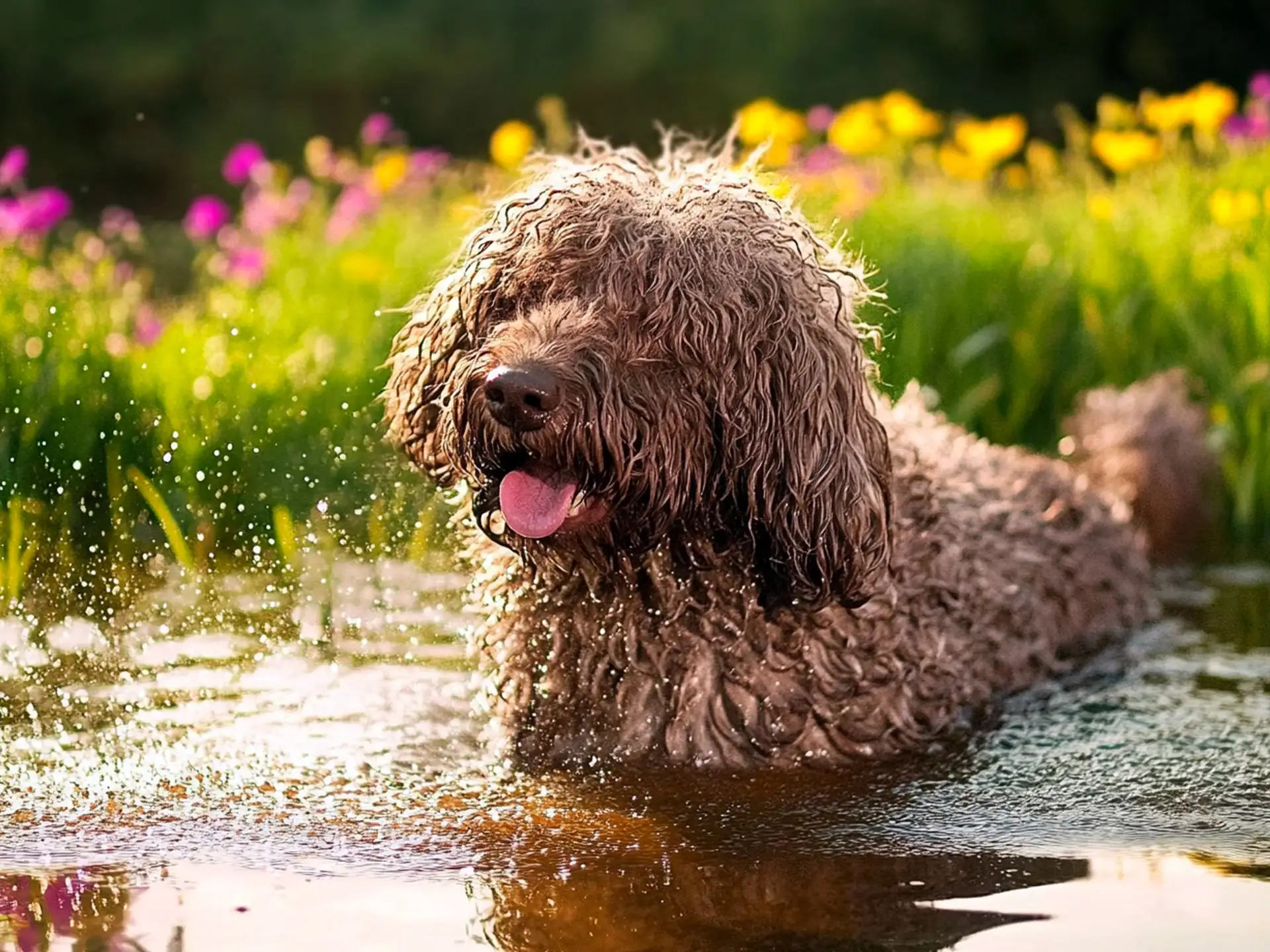Spanish Water Dog Breed Info & Overview
Imagine a curly-coated, energetic partner eager to join you on every escapade—that’s the essence of the Spanish Water Dog. Hailing from Spain’s rugged terrain, this medium-sized breed stands out for its low-shedding coat, sharp intelligence, and unwavering loyalty. Whether herding livestock or swimming by your side, they make each day an exciting adventure.
Characteristics
Pictures
Breed History
Originating in the Andalusian region of Spain, this curly-haired marvel has a history dating back centuries. Initially bred for herding livestock and assisting fishermen, these dogs quickly earned a reputation for their endurance in varied terrains. There’s a local legend about them diving into choppy waters to retrieve lost nets, which only solidified their standing as indispensable helpers.
As trade routes expanded, the breed spread across different parts of the Iberian Peninsula. Over time, they became known for their versatility, capable of working in mountainous areas, marshlands, and coastal regions. The Spanish Water Dog’s distinctive corded coat wasn’t just for show—it served as natural insulation against both scorching sun and chilly winds during long workdays.
Even today, some people in rural Spain still rely on these dogs for herding sheep and goats. Although recognized internationally more recently, the Spanish Water Dog maintained its authentic qualities through careful, selective breeding. If you ever get the chance to visit a small farm where these dogs are at work, you’ll see firsthand their remarkable skill and enthusiasm.
Temperament, Personality
Energetic, playful, and always up for a challenge, these dogs thrive in environments where they can stay busy. They adore interactive toys, puzzle feeders, and especially anything involving water. If you’re looking for a canine companion to keep you on your toes—and occasionally make you laugh with their antics—this breed fits the bill perfectly. It’s also a favorite among medium dog breeds enthusiasts.
When it comes to kids and other pets, early socialization is key. These intelligent canines can be protective of their families, so introducing them to various situations and individuals from a young age helps them grow into well-rounded adults. They relish positive interactions and will reward you with unwavering loyalty if treated kindly and fairly.
They do form strong bonds with their chosen humans, often shadowing them around the house. While the Spanish Water Dog loves engaging with its family, it might remain somewhat reserved with strangers until comfortable. A patient approach from visitors goes a long way in winning over this fun-loving yet vigilant pup.
Physical Characteristics
The most striking feature is that dense, curly coat that offers a distinctive, rustic appearance. Often left in its natural state, the coat can form tight cords if allowed to grow out. Though it comes in various shades—black, brown, beige, or even parti-color—the texture remains consistent: thick curls that serve as functional protection against weather extremes.
This medium-sized dog stands around 17 to 20 inches at the shoulder and carries a sturdy, athletic build. Both males and females have a stocky, muscular frame, enabling them to move swiftly and pivot quickly whether they’re herding sheep or chasing after a floating toy. Their expressive eyes often reflect their sharp intelligence and curious nature.
While the Spanish Water Dog might look like a cuddly teddy bear from a distance, don’t be fooled—they’re a powerhouse of agility and vigor beneath those curls. Strong hindquarters give them the ability to leap and sprint with surprising speed. Overall, their physical form strikes a balance between robust functionality and appealing charm.
Health Issues
Though generally hearty, this breed can face a few genetic health concerns. Hip dysplasia, common among many medium-sized working dogs, occasionally appears in these canines. Regular screenings and responsible breeding practices significantly reduce the risk, but prospective owners should always request health clearances when looking for a puppy.
Eye conditions such as progressive retinal atrophy (PRA) can occur, but early detection and veterinary check-ups help manage these issues. Some individuals may also be prone to allergies, usually manifesting as skin irritations. Maintaining a consistent grooming routine and monitoring any unusual scratching or licking can catch potential irritants before they escalate.
To keep the Spanish Water Dog in peak form, routine vet visits and a balanced diet are crucial. Their active lifestyle means they require the right nutrients to support joint health and sustained energy. Regular exercise not only keeps them physically fit but also helps spot any movement irregularities that could signal a developing issue.
Grooming Needs
Their signature curls might appear complex, but grooming can be surprisingly straightforward. Many owners prefer to let the coat grow into natural cords, trimming only occasionally to maintain a comfortable length. If you do opt for a corded coat, be mindful of rinsing thoroughly during baths, as trapped moisture can lead to tangles or mild skin irritations.
Some individuals choose to keep the coat shorter, making daily upkeep simpler. A quick check for debris, plus occasional brushing or finger-separating of cords, will prevent matting. Because this breed hardly sheds, you won’t be vacuuming fur from every corner, but you’ll still want to establish a consistent grooming schedule to keep those curls looking their best.
For a Spanish Water Dog living in an active household, monthly grooming sessions often suffice, though more frequent attention might be needed if they’re frequently in water or muddy fields. Regular nail trims, ear cleaning, and dental care round out a healthy maintenance routine. When approached with patience, grooming can become a bonding experience rather than a chore.
Exercise Requirements
Daily action is non-negotiable for these energetic dogs. They thrive on at least an hour of vigorous activity, whether that’s a brisk hike, a spirited swim, or a fast-paced game of fetch. If you’re looking for a workout buddy who never tires of exploring new trails, you’ve met your match.
In addition to physical exertion, mental stimulation keeps them satisfied. Interactive toys, scent work, or advanced obedience drills help curb boredom. This breed has a knack for problem-solving, so rotating through different games can prevent them from outsmarting the same routine. A bored dog may find mischief—like digging or chewing—instead of constructive play.
A Spanish Water Dog generally excels in dog sports such as agility, dock diving, or even competitive obedience. These activities tap into their natural athleticism and keen intelligence. Be sure to supervise sessions around water, especially if they’re swimming in unfamiliar environments. With consistent exercise, your curly friend will remain physically and mentally balanced.
Training Tips
Start with a solid foundation of positive reinforcement, as harsh methods can undermine trust. This breed is quick to learn but also quick to notice unfair treatment. Reward them with high-value treats or enthusiastic praise, and you’ll see a remarkable willingness to please and adapt. Always keep sessions short and engaging.
Introducing varied scenarios—like meeting different types of people or exploring new environments—builds confidence. Early exposure to farm animals, if possible, can awaken their natural herding instincts, but take care to guide them appropriately so that chasing doesn’t become an unwanted habit. Consistency is key; be patient yet firm in setting boundaries.
For a Spanish Water Dog, mental challenges often work wonders. Puzzle toys, advanced commands, or tasks like retrieving items from the water engage both body and brain. They respond well to a calm, assured handler who respects their intelligence. Keep the atmosphere upbeat and focused, and watch your canine companion blossom into a disciplined and happy partner.
Nutrition, Diet
Because of their active lifestyle, these dogs often require a nutrient-dense diet with moderate protein and healthy fats. An adult weighing around 40 pounds might consume approximately 2 to 2.5 cups of quality kibble per day, split into two meals. Look for formulas containing fish oil or flaxseed, as omega-3 fatty acids can help maintain their unique curly coat.
Those frequently engaged in herding or water activities might need slightly higher caloric intake, while more sedentary canines require less. Monitoring body condition is essential: you should be able to feel their ribs under a thin layer of fat. If your Spanish Water Dog starts gaining too much weight, consult a vet about adjusting portions or choosing a lower-calorie recipe.
Hydration is also paramount, especially for dogs that spend hours swimming or running. Fresh, clean water should be accessible at all times. Since they can be prone to skin sensitivities, consider diets that avoid common allergens, such as certain grains or additives. Experiment with wholesome ingredients like sweet potato, brown rice, and lean meats to discover what keeps your curly companion feeling fit.
Adoption, Breeders
Finding a reputable breeder for this lesser-known breed requires diligence. Always look for someone who health-tests their breeding stock and willingly shares medical records. Visiting in person, if possible, allows you to gauge the environment and meet the puppy’s parents. Skip any source that prioritizes quantity over quality—your future companion’s well-being is at stake.
For those considering adoption, check rescue organizations dedicated to the breed or broader groups that occasionally receive Spanish Water Dogs. A great starting point is the Spanish Water Dog Club of America, which provides resources and listings. Websites like Petfinder also let you search for adoptable dogs in your region, sometimes turning up this rare gem.
Ask plenty of questions about temperament, health history, and lifestyle compatibility before finalizing your decision. A reputable breeder or rescue coordinator will be equally curious about your home situation to ensure a lifelong match. Whether you bring home a pup or an older rescue, investing time in research sets the stage for a harmonious future with this unique canine.
Family Pet?
For families that enjoy outdoor adventures, this breed can be a dream come true. They love tagging along on hikes, camping trips, and even paddleboard excursions. Yet they also appreciate quieter moments, bonding with children over gentle play. Their loyal nature makes them watchful, stepping in to alert you if something seems off.
While they’re generally good with kids, supervision is wise around very young children. This curly-coated pal might get a bit too enthusiastic, accidentally knocking over a toddler during a zoomie session. Setting boundaries early teaches them how to channel that spirited energy. With proper socialization, they can coexist harmoniously with other household pets too.
A Spanish Water Dog thrives where it’s considered a true member of the family. They crave companionship, so long stretches alone may lead to boredom or anxiety. As a result, they suit households that can provide both attention and ample exercise. If you’re ready to include them in daily life, they’ll return the favor with unwavering devotion.
Right For You?
Before bringing one home, consider how much time you can devote to exercise and training. This is not a couch-potato dog content with a quick stroll. If your schedule is tight or you prefer laid-back weekends indoors, you might find this active companion a bit too demanding. They thrive in homes committed to daily outdoor fun.
The grooming routine, while not overly complicated, does demand consistency. If you love the idea of a low-shedding dog but aren’t prepared for monthly coat maintenance, think carefully. Regular mental challenges, from puzzle feeders to advanced obedience classes, also play a role. Neglecting these outlets for their intelligence can result in restlessness or unwanted behaviors.
For those who enjoy an engaged, hands-on relationship with their pet, the Spanish Water Dog can be the perfect match. They’ll keep you active, entertain you with their keen mind, and offer steadfast companionship. Ultimately, this curly friend is best suited for owners willing to embrace both the joys and the responsibilities of a dynamic, intelligent breed.
Conclusion
All in all, the Spanish Water Dog stands out as a spirited partner for those eager to explore the outdoors and engage in meaningful canine-human interactions. From herding sheep in its native Spain to splashing in a backyard pool, this breed consistently demonstrates adaptability and devotion. If you can offer ample exercise, mental challenges, and a cozy spot in your daily routine, you’ll be rewarded with unwavering loyalty and boundless affection. Every wag of that curly tail will remind you that companionship isn’t just about sharing a home—it’s about sharing life’s adventures. For anyone seeking a distinctive, low-shedding dog that doubles as a best friend, this curly dynamo may just be the perfect choice.
FAQs
-
How does the Spanish Water Dog’s coat naturally protect it in water?
The Spanish Water Dog has a dense, curly, wool-like coat that forms natural cords over time. This unique texture helps repel water and insulate the dog in cold conditions, making it well-suited for retrieving in wet environments. Unlike other breeds, their coat should never be brushed to maintain its water-resistant properties.
-
Can a Spanish Water Dog’s coat change color as it ages?
Yes! Many Spanish Water Dogs experience coat color fading or lightening as they mature. Puppies may be born with a darker coat that gradually turns a lighter shade over time, especially in fawn, brown, or black-colored individuals. Some also develop white patches as they age.
-
Do Spanish Water Dogs have webbed feet?
Yes! The Spanish Water Dog has partially webbed toes, an adaptation that enhances its swimming ability and makes it highly efficient in water retrieval and herding tasks. This feature, along with their athletic build, makes them natural-born water workers.
-
Why do Spanish Water Dogs have strong herding instincts despite being a water breed?
Unlike most water breeds bred solely for retrieving, Spanish Water Dogs were historically used for both water retrieving and herding livestock. Their high intelligence, problem-solving ability, and strong work ethic make them excellent multi-purpose farm dogs that can round up sheep just as efficiently as they swim.
-
Can a Spanish Water Dog be trained for scent detection work?
Yes! Due to their strong sense of smell and problem-solving skills, Spanish Water Dogs excel in scent detection and search-and-rescue work. They are often trained to detect narcotics, explosives, and even medical conditions like diabetes, making them a versatile working breed beyond water and herding tasks.
Breed Ratings
Exceptionally perceptive and quick to learn. Mental challenges and varied skills keep this sharp-minded breed fully engaged.
Loves games and interactive fun. This breed thrives on playful activities like fetch and tug, adding excitement to everyday life.
High-octane dog that needs daily exercise and mental stimulation. Expect plenty of brisk walks, swim sessions, or agility runs.
Low-shedding coat, but requires regular upkeep to prevent matting. You won’t see fur everywhere, but grooming is a must.
Moderate prey drive, mainly due to herding instincts. Supervision around small animals is advisable to curb unintended chasing.
Coat care can be involved, especially if kept corded. Basic maintenance is manageable, but routine grooming habits are essential.
Intelligent and eager to please, but requires consistent, positive methods. Firm yet gentle guidance fosters stellar obedience.
Craves human interaction and can become anxious when left alone too long. Best suited for families with ample quality time.
Alert but not incessant barkers. They’ll announce visitors or unusual noises but rarely vocalize without a legitimate reason.
Minimal drooling, making them a good choice for owners who prefer a cleaner home and dislike excessive slobber.
Often sociable with other dogs, especially if socialized early. Proper introductions ensure smooth canine relationships.
Robust breed with a few genetic concerns. Regular vet check-ups and a balanced diet maintain good health and vitality.


